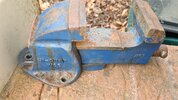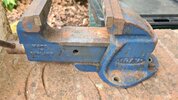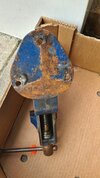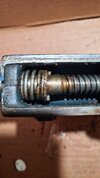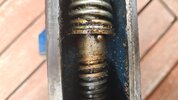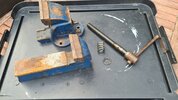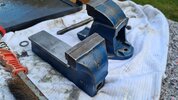I've been given this lovely little vice and am going to have a go at refurbishing it myself.
My first question is, what's the best way of removing the retaining pin from the screw thread shaft? Should I use a pin punch to knock it all the way through, or just partially through then rotate and pull out with some grips? It's hard to tell but it appears there isn't quite enough room in the cavity behind it to knock it all the way through.
Assuming it will be partly damaged in the removal process, how am I best to find a replacement? Is a split pin a suitable replacement or should I be looking for a like for like replacement?
If anyone's interested I'll chart my progress of its refurbishment on this thread.
My first question is, what's the best way of removing the retaining pin from the screw thread shaft? Should I use a pin punch to knock it all the way through, or just partially through then rotate and pull out with some grips? It's hard to tell but it appears there isn't quite enough room in the cavity behind it to knock it all the way through.
Assuming it will be partly damaged in the removal process, how am I best to find a replacement? Is a split pin a suitable replacement or should I be looking for a like for like replacement?
If anyone's interested I'll chart my progress of its refurbishment on this thread.


